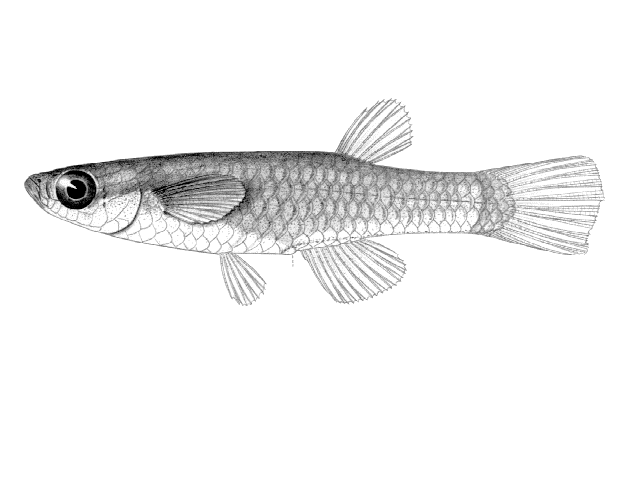| Procatopodidae (African lampeyes), subfamily: Procatopodinae |
| 5.5 cm TL (male/unsexed); 5.5 cm TL (female) |
|
benthopelagic; freshwater; pH range: 6.5 - 7.19999980926514, non-migratory |
| Africa: small rivers, brooks and shallow parts of larger bodies of water, estuaries and lagoons in the warm coastal plains of Natal, South Africa, from the Pongola River and Kosi system southward to the Umlalazi River near Richards Bay (Ref. 47311, 52193). Also in Transvaal, South Africa (Ref. 27139). Reports from the Okavango swamps in Botswana and the Cuanza and Cuilo in Angola probably refer to other species (Ref. 47311). |
|
Dorsal spines (total): 0-0; Dorsal soft rays (total): 7-10; Anal spines: 0-0; Anal soft rays: 14-15. Description: Dorsal fin with 7-10 rays; anal fin with 14-15 rays (Ref. 52193). Scales in lateral series 27-28 (Ref. 52193). Colouration: Fin colouration of mature males : dorsal, caudal, and anal fins sooty black with a few yellow spots and a lemon yellow outer edge (Ref. 52193). |
| Found in inshore vegetated areas of lakes and well-vegetated streams (Ref. 52193). It feeds on aquatic insects, such as mosquito larvae and algae (Ref. 52193). A serial spawner, laying eggs on vegetation (Ref. 52193). Potential mosquito control agent (Ref. 7248). Not a seasonal killifish. Is difficult to maintain in aquarium (Ref. 27139). |
|
Near Threatened (NT); Date assessed: 24 January 2017 (B1b(iii)+2b(iii)) Ref. (130435)
|
| harmless |
Source and more info: www.fishbase.org. For personal, classroom, and other internal use only. Not for publication.

